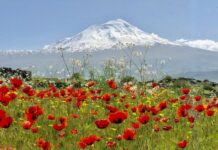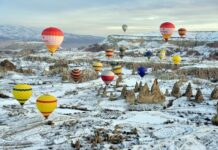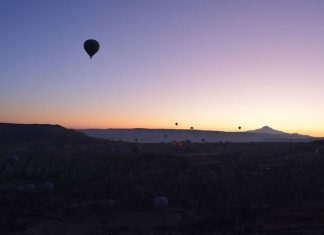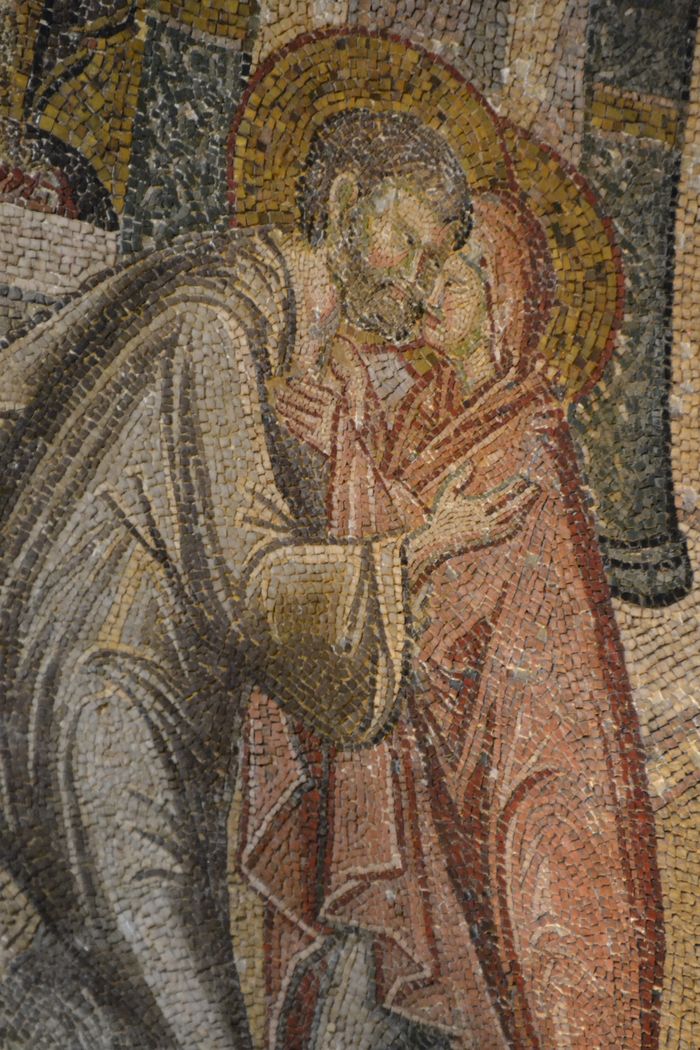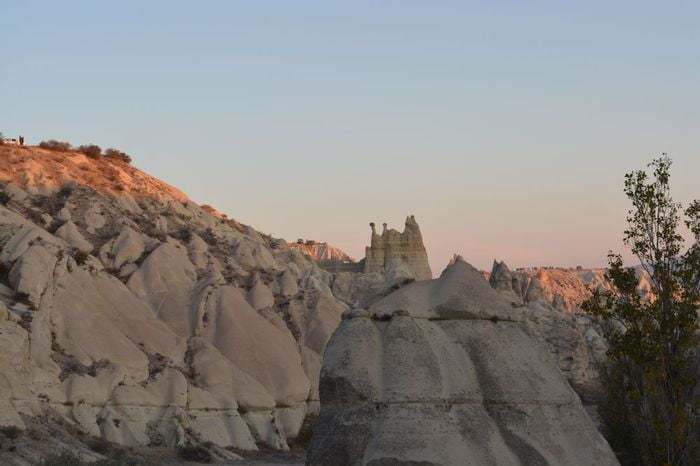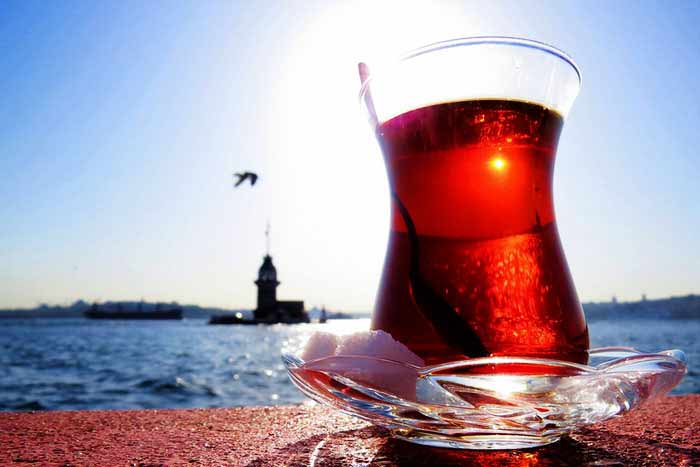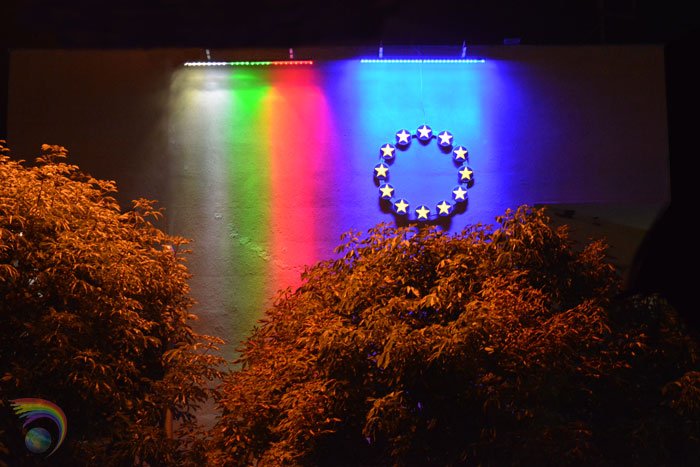His buildings speak to us of him as well. Some we know indirectly from contemporary reports: palace buildings in Ravenna, Pavia, and Verona, with great sculptures of the triumphant monarch outside. In thirty years, Theoderic never finished the great palace he undertook in Ravenna, but every successor regime there used it until it fell to ruin long after. The pattern was entirely imperial, complete with a connection to the circus where the ruler could watch the horse races. You could see Theoderic on horseback in a portrait in the “Seaview dining room” (triclinium ad mare), and also standing between figures representing the cities of Rome and Ravenna over the grand entrance to the palace. At Ravenna, he also restored an aqueduct built in Trajan’s reign, to ensure the water supply. Some of his work there survives more or less intact; one example is the church of San Apollinare Nuovo, which was Theoderic’s palace church. The original decoration included mosaic portraits of Theoderic and his court at one end of the south wall, by the entrance.
They appeared at the head of a procession of saints, martyrs, and biblical figures, with an image of Christ at the altar end of the wall. (In later years, when Constantinople had seized control of Ravenna, clumsy mosaicists effaced Theoderic’s own image and others of his court, leaving just enough traces, including a ghostly shadow of the man himself, to let us see what they meant to destroy.) His buildings follow others equally impressive—like the mausoleum of Galla Placidia, the doughty princess and empress regent of the fifth century—and precede others, as we shall see. We can hardly differentiate Theoderic’s Ravenna from what went before or came after in its magnificence bulgaria tour balchik.
And then there is Theoderic’s tomb. Built just outside the city walls of Ravenna, close to the harbor where ships from Constantinople and elsewhere in the Mediterranean docked, this looming structure astonishes visitors to this day. Today it stands alone, set apart from the built-up area of the modern city that serves European tourists and beachgoers. Theoderic finds rest in a surprising white decagon, two stories and thirty- three feet high, a shrine for the lavish porphyry sarcophagus in which his body rested. Over all, the dome or cap is made of a single piece of marble weighing many tons; it was brought down from Istria at the head of the Adriatic. Every attempt to discern barbarian influences and tastes in it has failed. We are left with a relic that stands second only to Hadrian’s mighty tomb in Rome as a statement of imperial grandeur. Augustus’s own tomb in Rome, grandiose enough in its day, fades from memory in this contest.
Tolerance is easy
Tolerance is easy to applaud, and Theoderic has always been applauded, if often patronizingly. Something like “not bad for a barbarian” has been the subtext of many favorable judgments about him over the years. Two sentences from his various public statements have repeatedly attracted such praise, so let us listen to them:
“We cannot impose religion, because no one can be forced to believe against his will.” (Religionem imperare non possumus, quia nemo cogitur ut credat invitus Theoderic’s mind in 519.)
“Obeying the law is the mark of civility.” (Custodia legum civilitatis est indicium.)
For any Christian Roman of this period, these are admirable sentiments. To know what to make of them, we have to go to Genoa.
First, bear in mind the map of Italy. Genoa was important to Theoderic. His center of power and presence stretched from Milan east to Ravenna in northern Italy, with important taproots south to Rome. The western front along the Ligurian coast toward Gaul was sensitive territory. When hostilities broke out in Gaul and the Franks were active and suspected of being in cahoots with Constantinople, Genoese support was important to Theoderic. On two occasions around 510, we can tune in to hear his public voice addressing the Jewish community there. At about the same time, we see him taking particular care to make sure that the grain supply and other expected benefactions were well looked after in that area and in the provinces of Gaul beyond, for he was aware that soldiers, in their passing to and fro, needed to find supplies locally. Even a friendly army passing through your neighborhood could have a devastating effect if the governing regime was not as careful as Theoderic tried to be.

